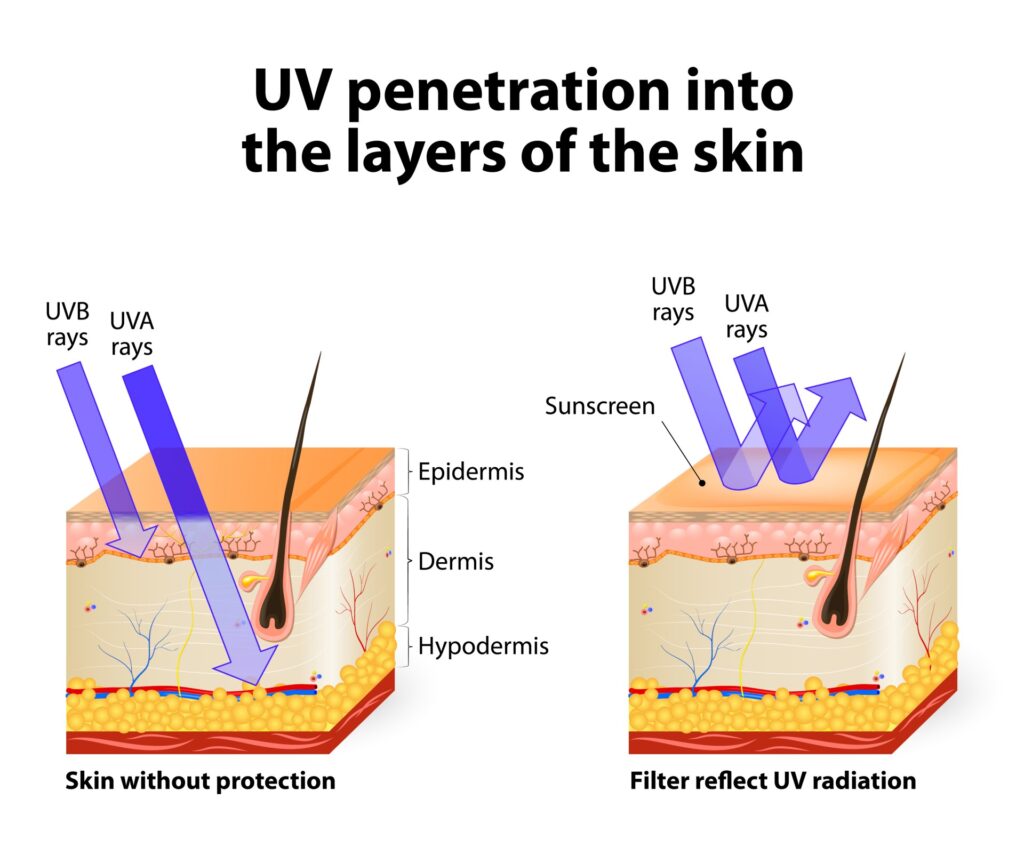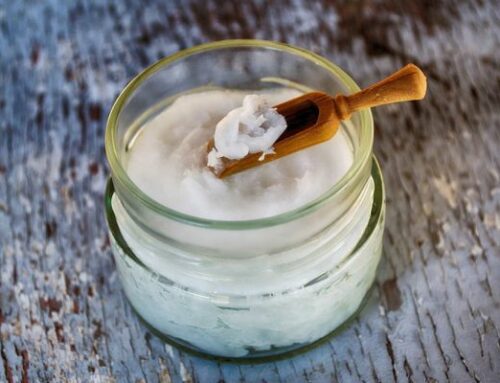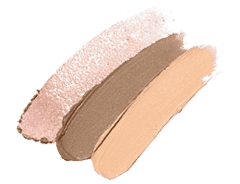
For as long as humans have been around, they have been taking measures to protect themselves from the Sun, and it’s no surprise that today’s leading beauty and cosmetic manufacturers are recognizing the importance of incorporating sunscreen and sun protection into their products. Ancient Greeks were thought to use olive oil for sunscreen, and Ancient Egyptians were believed to use extracts of the lupine plant, rice extract and jasmine to protect themselves, and properties of these ancient remedies can still be found in cosmetic sunscreen solutions today.
As far back as 1928, as advancements in the cosmetic industry and field of chemistry progressed, synthetic sunscreens have been produced, and the first commercial sunscreen was created by the French chemist Eugene Schueller –who famously founded the skincare brand L’Oreal. In the 1950’s, Coppertone capitalized on the emerging market for sunscreens with their widely recognized Coppertone Girl. As developments in science progressed, sunscreens advanced to having water-resistant capabilities in the late 1970’s.
Today, we are seeing even more development and research behind the science of sunscreens in cosmetic and beauty products and how they can be more effective to protect humans from the harmful UV rays emitted by the sun. Recent studies have shown skin cancer to be the number one cause of cancer in the United States with over 8,000 people diagnosed daily. As a result, many consumers are paying attention to the level of protection their skincare products offer, and cosmetics companies are incorporating Sun Protection Factor (SPF) measures into their skincare lines help keep customers safe from harmful ultraviolet rays emitted from the Sun. But not all sunscreen is created equally.
In addition, advanced research into skin cancer and it’s causes make the issue more pressing than ever before. While skin cancer is one of the scariest forms of the disease to contract, prevention is key, and many experts advise that early detection is crucial. With this in mind, there is more opportunity for cosmetics brands to begin embracing and incorporating protective measures from the sun into their products, not only for anti-aging prevention, but also for the safety of the consumer.
The science behind Cosmetic Sunscreen and Beauty Products
Sunscreen, sometimes referred to as sunblock or sun cream, is a topical product applied to the face and other areas of the body exposed to the sun that absorb or reflect some of the Sun’s ultraviolet rays in order to protect the skin from being damaged or burned, and has also been proven to help slow the signs and reduce the appearance of aging. Because of this, many cosmetic and beauty companies are incorporating some form of sunscreen into their products. Generally speaking, sunscreens are classified by two categories: physical sunscreens, ones that reflect ultraviolet rays, or chemical sunscreens, those that absorb the rays, both which work to protect any exposed skin from being burned.
Physical Barriers
Physical sunscreens, also sometimes referred to as mineral sunscreens are barriers applied to the skin that reflect the Sun’s UV rays, bouncing them away from the skin. They are also known as “inorganic” sunscreens because they do not contain carbon molecules. Mineral sunscreens are made the ingredients zinc oxide and titanium dioxide, which are designed to scatter and reflect UVA/UVB rays, and provide immediate protection after applying. It is important that manufacturers use forms of minerals that are coated with inert chemicals to reduce photo activity. If they don’t, users could suffer skin damage.
Chemical Barriers
Chemical sunscreens, also sometimes referred to as classic, traditional, or non-mineral, use chemical ingredients that are designed to absorb and dissipate UVA/UVB rays and contain chemicals like oxybenzone and octinoxate, which work by absorbing the energy of UV rays and converting it to heat that is then dispersed in the skin. These types of sunscreens are also known as “organic” sunscreens – because these chemicals are built from carbon molecules.
What are UV rays?

The light from the sun that travels to earth and reaches our skin is made up of two types of harmful rays: long-wave ultraviolet A (UVA) and short-wave ultraviolet B (UVB). UVA rays have the ability to penetrate deep into the dermis, the skin’s thickest layer. Unprotected exposure to these rays can lead to premature skin aging, wrinkling and can even have a detrimental effect on the immune system. UVB rays are the ones that will usually burn the superficial layers of your skin and play a key role in the development of skin cancer. The intensity of UVB rays vary by season, location and time of day, but experts recommend that the less exposure a person has to these, the better.
Generally speaking, UVA rays can be understood to have an aging effect on the skin. These rays make up more than 90% of all UV radiation, and they can even penetrate clouds and glass. UBV rays have a more immediately noticeable effect and can cause sun burn and skin cancer.
New developments in sunscreen products have led to the ability to protect against both UVA and UVB rays in the form of broad spectrum SPF, and many cosmetic and beauty companies are incorporating broad spectrum coverage in their products to offer more protection to their customers.
Sun Protection Factor (SPF) in Sunscreen
Sun Protection Factor, commonly referred to as SPF, is a measure of the fraction of sunburn-producing UV rays that reach the skin when a sun protectant product is applied. For example, a product that claims to have an SPF of 30 will block 1/30 of the harmful UV rays that will reach the skin. SPF is considered an imperfect measure of skin protection because while it may be protecting against UVB rays, it doesn’t do much to protect UVA rays, which can still cause damage to skin, but don’t cause the skin to burn like UVB rays.
As a solution to this problem, cosmetic sunscreen companies have started to create broad-spectrum products, which have the ability to protect against both UVA and UVB rays, for a more comprehensive layer of protection within a product. There is a lot of confusion around the optimal measurement of SPF in products, and while it might seem logical to expect more protection out of a higher SPF, experts have determined that the ideal SPF is 30, with little to no benefits shown in products containing higher SPF measurements.
Which ingredients in cosmetic and beauty products are the most effective?
Sunscreens made with zinc oxide are considered the best option it offers the most protection providing strong protection with few health concerns to the human body, doesn’t break down in the sun, and offers protection from both UVA and UVB rays. Experts believe that Zinc oxide is stable in sunlight and can provide greater protection from UVA rays than titanium oxide or any other sunscreen chemical approved for use in the United States.
Environmental Concerns and Regulations
The evolution and development of sun protectant products has enabled people all over the world to engage more in outdoor activities and especially those around bodies of water. But, the chemicals used in sunscreens have caused concerns with environmentalists, who believe chemicals such as oxybenxone and octinoxate can have adverse effects on coral reefs and marine organisms, as certain sun screens containing these products can increase the production of hydrogen peroxide under water, which damages phytoplankton. Nanoparticles of titanium dioxide have also been thought to be a danger to marine animals when ingested as they can accumulate in coastal waters.
Since the adoption of the SPF calculation in 1978, sunscreen labeling regulations have been in effect and standards have been evolving as new studies and developments in chemistry come about. In June 2011, the FDA issued a comprehensive set of rules for brands offering sun protection to consumers which were designed to help educate and inform consumers seeking protection from the sun and its harmful UV rays in skin care and cosmetic products within the market.
Since the early days of civilization, we have seen attempts by humans to protect themselves from the sun. From primitive attempts with plant extracts to today’s highly advanced chemical solutions in sunscreens and cosmetics, people are beginning to understand more about the damaging effects the Suns UV rays can have on human skin, and it is important to remember that while many new developments have provided safer ways for humans to protect themselves, no product offers complete protection. With that in mind, many cosmetic and beauty companies are figuring out ways to offer protection from UV rays in their products, from moisturizing creams containing SPF to easily applicable aerosol sunscreens, it’s never before been easier to incorporate some type of protection into a consumer’s daily routine.
In today’s cosmetic market, sun care products must have the ability to remain long lasting and deliver effective protection from the Sun’s UV rays. Phoenix Chemical has experience developing a broad portfolio of–including sunscreen products. Whether targeting SPF enhancement, or developing multi-functional film formers to provide aesthetically pleasing wear characteristics, there are constant developments being made that make adding sun protection simple and effective for beauty and cosmetic brands. If you want to know how to make your own sunscreen, we also have you covered! These developments underscore our commitment to adapt and improve sun care properties to satisfy the evolving customer and regulatory requirements, and you can feel confident in our abilities to provide effective and safe protection from the sun in your beauty and cosmetic products.
For more information, contact us at 908-707-0232







